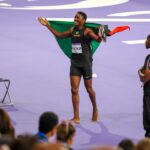Zambia, a landlocked nation in Southern Africa, is rich in natural resources and has immense potential for growth and development. However, the country faces several significant economic challenges that hinder its progress and threaten its stability. Here are the top five major economic challenges Zambia currently faces:
1. Dependence on Copper Mining
Zambia’s economy is heavily reliant on copper mining, which accounts for a significant portion of government revenue and exports. This dependence makes the country vulnerable to fluctuations in global copper prices. When prices fall, as seen in previous years, Zambia’s economy suffers, leading to reduced government revenue, increased unemployment, and weakened currency. Diversifying the economy by investing in other sectors, such as agriculture, tourism, and manufacturing, is crucial for reducing this vulnerability.
2. High Debt Levels
Zambia has faced a rising debt burden in recent years, leading to significant economic challenges. The country’s external debt has increased substantially, leading to concerns about sustainability and repayment capacity. High debt levels limit the government’s ability to invest in essential services such as healthcare, education, and infrastructure. Additionally, the country has faced challenges in servicing its debt, leading to negotiations with international creditors and organizations for relief. Addressing this debt crisis is vital for restoring economic stability and fostering growth.
3. Inflation and Currency Instability
Zambia has experienced high inflation rates, driven by various factors, including rising food prices, fuel costs, and currency depreciation. The Zambian kwacha has faced significant fluctuations against major currencies, which erodes purchasing power and increases the cost of living for ordinary citizens. High inflation can also deter investment and savings, leading to slower economic growth. Implementing sound monetary policies and fostering a stable currency environment are essential steps for mitigating these challenges.
4. Poverty and Unemployment
Despite its wealth in natural resources, Zambia grapples with high poverty rates and unemployment. A significant portion of the population lives below the poverty line, struggling to access basic necessities. Unemployment, particularly among the youth, is a pressing issue, leading to social unrest and limiting economic participation. Enhancing job creation through investment in sectors such as agriculture, tourism, and small and medium enterprises (SMEs) is vital for addressing poverty and unemployment.
5. Inadequate Infrastructure
Zambia faces significant infrastructure deficits, particularly in transportation, energy, and water supply. Poor road networks, inadequate rail systems, and unreliable electricity supply hinder economic activities and deter investment. These infrastructure challenges contribute to high operational costs for businesses and limit access to markets. Investing in infrastructure development is essential for improving connectivity, boosting trade, and attracting foreign investment.
Zambia’s economic landscape is characterized by both potential and significant challenges. Dependence on copper mining, high debt levels, inflation, poverty, and inadequate infrastructure pose hurdles to sustainable development. Addressing these challenges requires strategic planning, policy reforms, and investment in diverse sectors to create a resilient economy that can withstand global fluctuations and improve the living standards of its citizens. With concerted efforts from the government, private sector, and international partners, Zambia can pave the way for a more stable and prosperous future.






